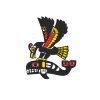Volunteers removed 1,700 kilograms of garbage from the riverbank at this year’s Lower Cowichan River Cleanup.

On a sunny Sunday morning, community members fanned out along the banks of the Quw’utsun Sta’lo’ (Cowichan River), garbage bags in hand, to help clean the river.
They were taking part in an annual event — the Lower Cowichan River Cleanup — with the goal to remove garbage from an approximately 15-kilometre stretch of the Quw’utsun Sta’lo’ before fall and winter rains wash it into the ocean. This year, the crew of volunteers removed 1,700 kilograms of garbage from the river.
Dozens of volunteers gathered at home base — on River Road, which is part of Cowichan Tribes reserve land — to sign up for one of many cleanup routes along the river. Some routes were within walking distance, while others were a short drive away.

Coming together for the water
A welcome from Cowichan Tribes Chief Xtli’liye (Lydia Hwitsum), Elder Qwiahwultuhw (Robert George) and Cowichan Tribes Councillor Qwiyahwult-hw (Stuart Pagaduan) started off the day, followed by words from Cowichan Valley Regional District chair Lori Iannidinardo and the Cowichan Watershed Board’s outgoing executive director Tom Rutherford.
Speaking with The Discourse, Hwitsum said the importance of people gathering to clean up the river is just that — coming together.
“The way of coming together is a fundamental principle of our people,” she said. “I think we just continue to lift up not only the value and recognition of water, but also the value and importance of our relationship to each other as we support and are connected to water systems in this whole watershed.”


Qwiahwultuhw reminded volunteers about the importance of prayer for the rivers and asked that they say prayers as they work alongside and in it.
Before sending people off to meet with their teams and collect supplies, Rutherford took a moment to note the water’s ability to connect people.
“Many people talk about how rivers divide valleys,” Rutherford said to the group. “Our rivers bring people together.”


Take care of the river and the river takes care of us
Out on the water, Dr. Shannon Waters carried some garbage in her hand as she walked along the bank of the Quw’utsun Sta’lo’ near Black Bridge. Her daughter, Atira, walked in the water pointing out critters and lava rocks.
Waters is from Stz’uminus First Nation with family ties to Cowichan Tribes. She is also a public health and preventive medicine physician and the Cowichan Valley’s medical health officer. As an Indigenous woman, she said she carries three priorities with her in her work — connection to the environment, mental wellness and maternal, child and family health.
“I really feel the work of the watershed board combines all the things that have been the foundation for our health for generations upon generations,” Waters said. “I’m bringing one of my little ones here today for her to know that it’s important for us to take care of the land, the water, the plants [and] the animals around us and they can take care of us as well.”

A way to support people’s wellness during the COVID-19 pandemic is to be with trees, plants and water, Waters said. She remembers taking her kids to the river and different spots in the valley over the past two years.
“I just let them run around and I felt like I could have a rest because I knew the water was looking after them and it nursed all of us,” Waters said.
The group Waters was part of on clean-up day focused on the area between Black Bridge and Allenby Bridge. They found plastic food waste, glass, shelter materials and more along the river.
Further upriver, Kai Robinson and his son, Wolfe, walked along the bank and in the water to find garbage. Every once in a while, Wolfe found crayfish shells and exclaimed excitedly.
It was the first time Robinson and his son attended the annual cleanup. While they found things that shouldn’t be in the river, they also enjoyed seeing the living things that should be there, Robinson said.

“We love swimming in the river. Wolfe and I are down here almost three or four times a week,” Robinson said. “We want to contribute whichever way we can to help keep it nice and clean and healthy for everybody that wants to enjoy it.”
An appreciation for water
Elizabeth Ellliot began swimming in the Xwulqw’selu Sta’lo’ (Koksilah River) once a week this summer and said it occurred to her that the least she could do is help keep the waters clean in the region.
As a new resident to Duncan, it was also her first time at the Lower Cowichan River Cleanup. She’s moved around a lot and said the privilege of having access to water became clear to her while living in Alabama.
“I didn’t realize how much I’d miss it when I left,” Elliiott said, a garbage bag in hand. “We’re lucky to have so much access to so much water and we need to take care of it. It’s so beautiful and full of life.”

Walking upstream from Elliott was Shirley Walters. From Capetown, South Africa, Walters was visiting her sisters in Duncan for the first time in over three years. She said her sisters attend the cleanup every year.
Standing next to the Quw’utsun’ Sta’lo’, she recalled recent severe droughts that affected South Africa. Coming from a water-scarce environment, Walters said she has a deep awareness and appreciation for the importance of water.

“So when this opportunity came up I thought I’d love to be there,” Walters said. “The appreciation of what you have here is so incredible and preserving what you have is so important. It’s life-giving to spend time in [these] rivers.”
‘Do something’
Back at home base, Qwiyahwult-hw (Stuart Pagaduan) barbecued salmon for volunteers while Rotary Club of Duncan members grilled burgers.

As volunteers returned, so did truckloads of garbage collected from the river. Bags of smaller pieces of garbage were accompanied by larger items like shopping carts.
Cowichan Watershed Board project coordinator Jill Thompson said the lower river cleanup has been happening for at least a decade. It always takes place in the late summer when the water is low so the riverbank is accessible.
Thompson said cleanups like this help raise awareness about the issues the rivers face.
“We’re all out here, everybody is witnessing the garbage in the river, and that’s helping to create political will,” Thompson said. She pointed out local politicians who were at the cleanup, such as Duncan Mayor Michelle Staples, Cowichan-Malahat-Langford MP Alistair MacGregor and others. “It’s eye-opening for people to see the garbage and sometimes policy emerges from this … You have to see it to know how to fix it.”


Coming together as people to witness the river and take action is what’s going to keep it healthy and flowing into the future, said Rutherford, who used to work for Fisheries and Oceans Canada.
“Sometimes I say — and I’m a technical person — that we have enough science,” Rutherford said. “We need to change behaviour.”

Rutherford said First Nations, different levels of government, non-government organizations and community members have been coming together for decades to ensure the sustainability of rivers in the Cowichan Valley. He said the Lower Cowichan River Cleanup is a good example of what happens when people collaborate.
“I think the river is going to benefit and that’s something that we’re all focused on,” Rutherford said.
The effects of climate change on local rivers are becoming clear as extreme drought and flood events become more common. Local fish populations are also deeply affected by the issues in the rivers, Rutherford said. But in the Cowichan Valley, chinook salmon are “holding their own.”
“There’s a lot of reasons why but one of them is because we’re looking out for our river,” Rutherford said. “Cowichan Tribes’ people are doing a wonderful job of managing that stock and being conservationists and showing the rest of us how that works.”

While climate change is daunting and can leave people feeling apathetic, Rutherford said the trick to making a difference is to “do something.”
“If we all did something — what we can, what we’re comfortable with, what we can afford, what we have time to do — then it’s going to work,” Rutherford said. “If we’re all making the changes we can and if we have visionary leaders, which we do, I really think we can move the needle and we’ve already seen that in the valley.”
 Email
Email



